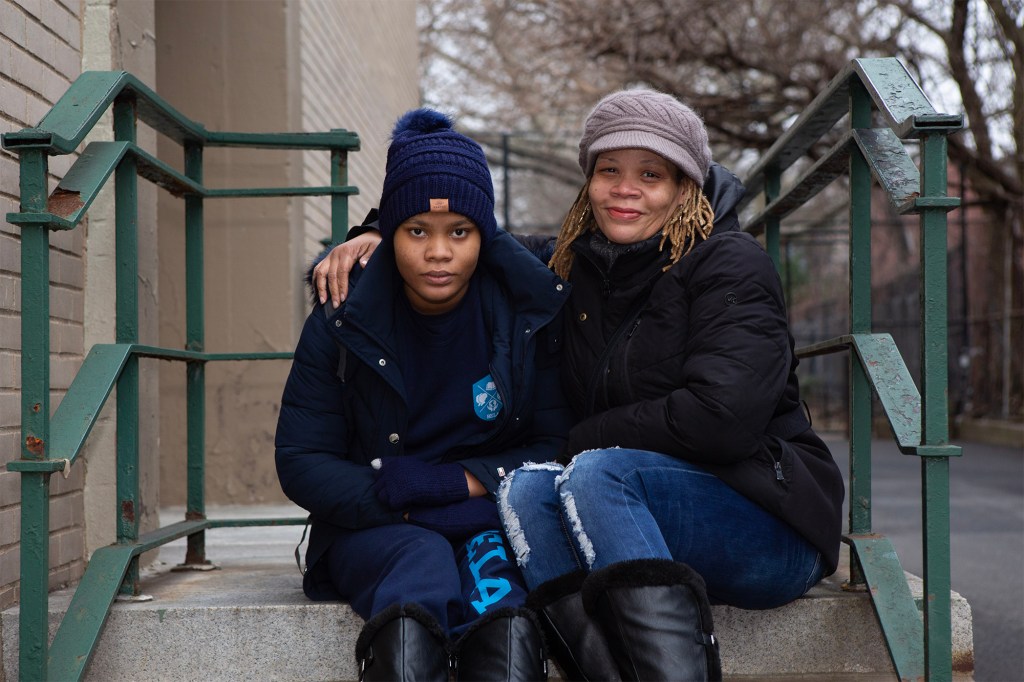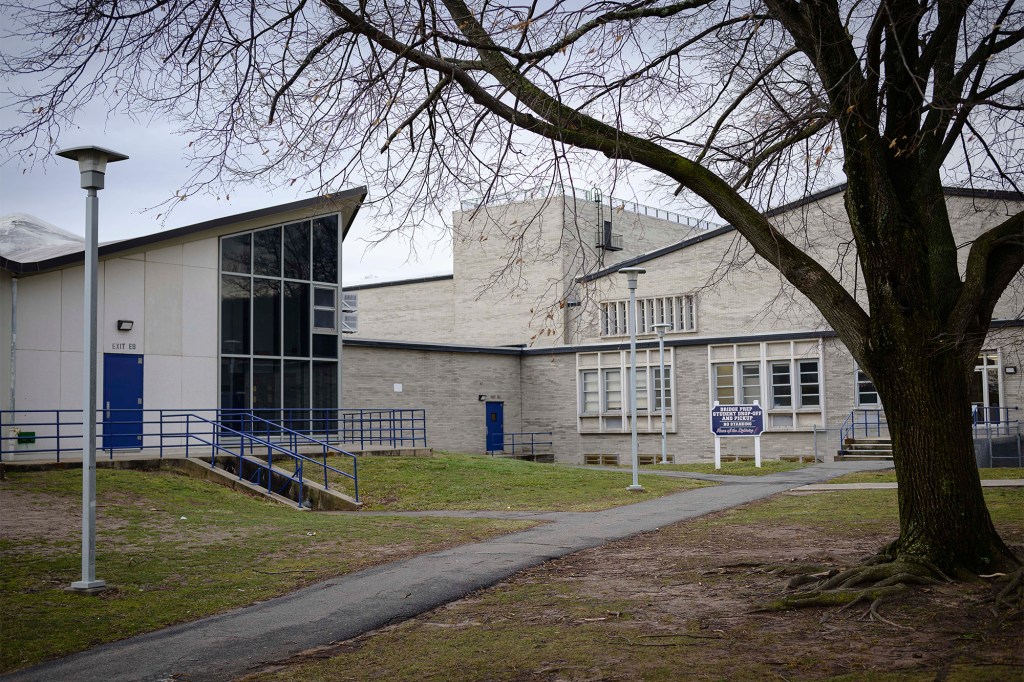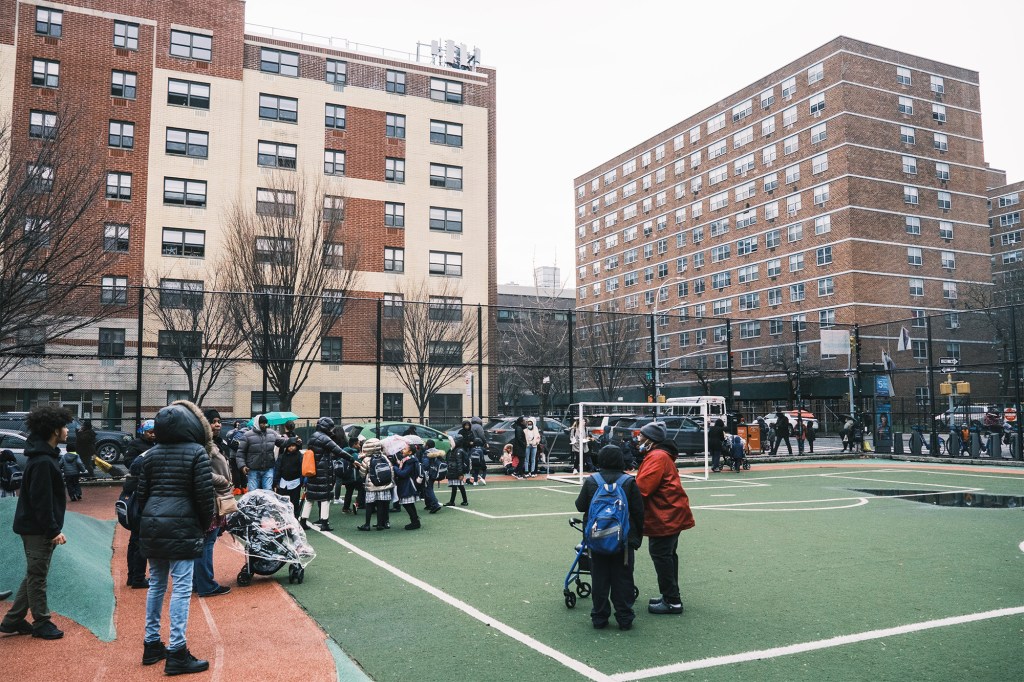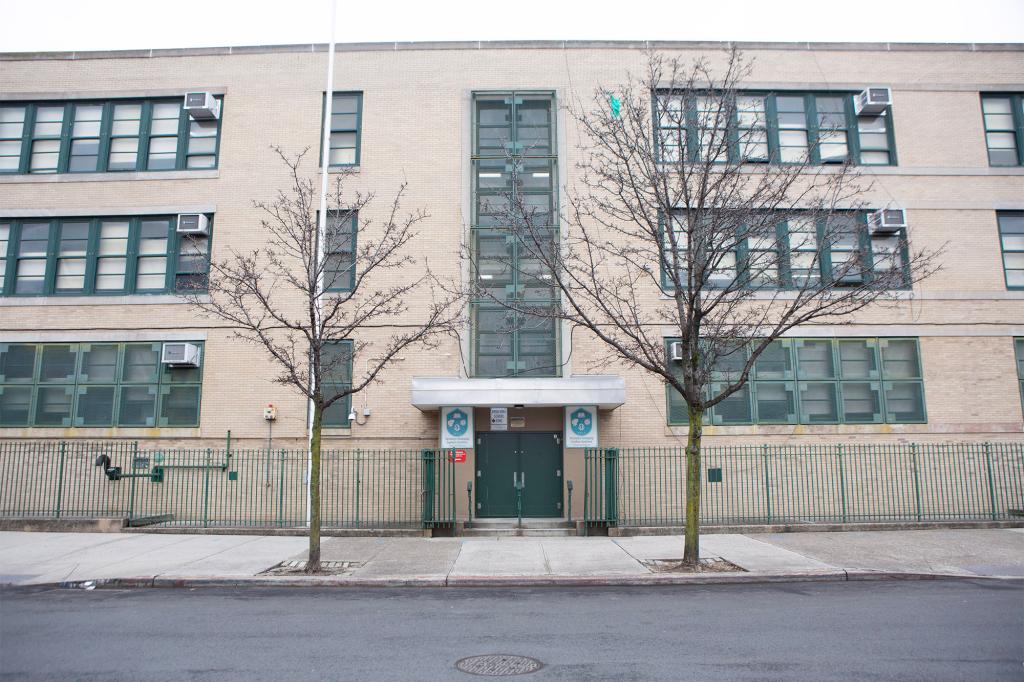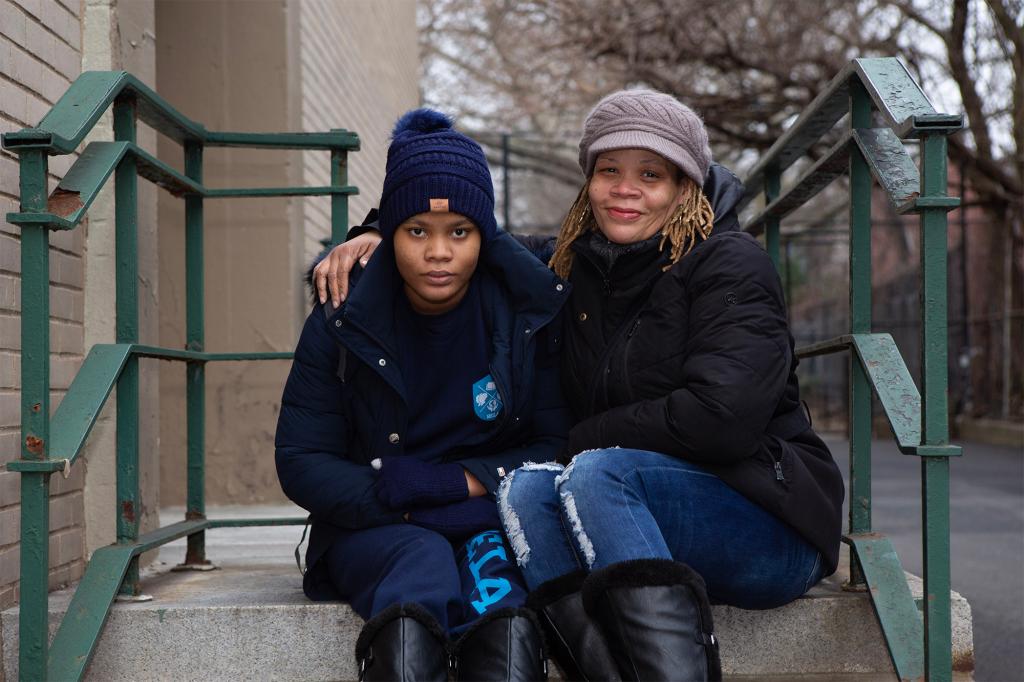A Brooklyn mom says the city’s charter schools saved her autistic daughter’s life.
Despite a troubling start to her education at a district school in Bed-Stuy, Marcia Ward-Mitchell’s 14-year-old daughter Kimana, who has autism and ADHD, is now at her third city charter school – and thriving.
“I have to say, I really feel that (first) charter school saved my life and my daughter’s life,” Ward-Mitchell, 45, said, crediting the smaller classroom settings and “one-on-one care” of students.
“Switching from a district school to a charter school was a breath of fresh air. I’m serious when I tell you, it literally brings me to tears sometimes when I think about it because I really was at a point where I didn’t know what to do.”
“These people didn’t know how to take care of my child. They didn’t care. She was just a number to them,” the mom-of-two added.
Ward-Mitchell spoke out about her daughter’s success amid Gov. Hochul’s push to allow dozens more charters to open in the city in coming years – despite objections from progressive Democrats and teachers’ unions.
While charter critics have long argued the publicly funded, privately run institutions don’t properly serve students with Independent Education Plans — which outline funded special ed needs — parents and and charter school leaders are pushing back, telling The Post this week the claims are a “slap in the face.”
Timothy Castanza, the executive director of Bridge Preparatory Charter School on Staten Island, where 64% of students have an IEP, defended the curriculum – arguing they cater specifically to those with dyslexia and other language-based disabilities.
“Every student that’s in our school, whether they have dyslexia, a language-based learning disability, an IEP or they’re just [general education] students — every student gets a full hour every single day of Orton-Gillingham instruction,” he said, referring to a multisensory, phonics-based teaching method.
Castanza said students are grouped together based on their ability, but reading readiness assessments are done regularly to track progress. The approach, he said, allows students to move to different ability-based groups continuously throughout the school year.
Bridge Prep, like many city charter schools, uses what’s called an integrated co-teaching system, or ICT — placing IEP students and general education students in the same classroom with multiple certified teachers.
“You’d never be able to walk into a classroom and say, ‘oh that’s the kid right there that has dyslexia’, because we integrate all of our students with their peers — and that is the way that special education is supposed to happen,” Castanza said.
“As a charter school, I think one of the things that we’re experiencing some frustration with is that all we hear about is like charter schools don’t serve kids with IEPs. And for us, like not only do we serve them, but like we serve a majority of our school,” he continued.
“That narrative that we get … is a little bit of a slap in the face.”
LaMae deJongh, chief schooling officer at Success Academy Charter Schools, where 14%-15% of students have learning disabilities, agreed.
“It’s a myth,” she said of the claim that charters underserve special needs students. “It’s unfortunate that that narrative is out there. It’s not the first time we’ve heard it.”
Success Academy also offers a 12:1 teacher-student ratio setting for children who require it at any of the 49 campuses, allowing for small group instruction.
DeJongh said test results speak for themselves.
“In just last school year, 54% of our students with IEPs passed the ELA exam, and that compares to 18% of DOE students with learning disabilities, so kind of the same kind of peer group,” she said. “In math, it’s even more impressive: 63% passed math, compared to 14% at the DOEs.”
Free the charters: Read more in the special series
- Resisting the growth of charter schools is racist, supporters claim
- The evidence of charter-school success is undeniable — why hold them back?
The NYC Autism Charter Schools and Neighborhood Charter Schools – each with campuses in Harlem and the Bronx — have specific Autism Spectrum Disorders programs for kids, according to their websites.
At NYC Autism, the school says it can offer a one-on-one teacher/student ratio in most classrooms, as well as 30-hours of “Applied Behavior Analysis” to students each week. The ABA method, in part, aims to help increase social skills and decrease behavioral issues.
Meanwhile, key aspects of the Neighborhood Charter Schools program involves smaller class sizes, ICT and “social club” — a social skills lesson led by a speech pathologist.
Among the arguments from charter critics is that privately run schools serve fewer special needs kids — adding to the educational burden of the public school system. Yet, the difference in enrollment figures isn’t all that different currently, data compiled by NYC Charter Center shows.
City public schools only enrolled only slightly more students than charters in 2022 – 19.5% versus 18.1%, the data shows. That figure was wider n 2015, when 19% of students enrolled in public schools had a disability or learning difficulty compared with the 16.9% enrolled in charters.
According to the DOE website, students with IEPs in district schools are often educated in the same classroom as their peers. In classrooms that cater to ICT services, no more than 12 students –or 40% of the class — can have IEPs. Such restrictions don’t appear to apply at charters.
Even with the criticism often aimed at charters, Ward-Mitchell insists they work.
When Kimana attended the Bed-Stuy district school for pre-K and kindergarten, she struggled with social and emotional issues that would often trigger tantrums, Ward-Mitchell recounted.
“They would send her to the principal all the time. One time they even locked her in a closet and told me my daughter was in the closet and I needed to come get her,” Ward-Mitchell said, adding the calls to pick her up became a daily occurrence.
Ward-Mitchell said Kimana thrived at learning and taking tests at the district school — but claimed it “ended up kicking her out” because it couldn’t deal with her behavior.
“When I switched to charter school, it just felt so human. It just felt so loving and nurturing and they really cared about her education. And my daughter is an honor roll student.,” she said.
Kimana attended Bed-Stuy’s Brooklyn Charter School from the 1st to 5th grade, Launch Expeditionary Learning Charter School in Crown Heights for middle school, and is now in ninth grade at Brooklyn Emerging Leaders Academy Charter High School.
“Parents deserve to have a choice of where they send their child to school, and charter schools give parents that choice,” Ward-Mitchell said.
“I don’t want you to think I’m against district schools, because I’m not. I went to district schools and I’m all for district schools if it’s working for that child.”
“A lot of the district schools are kind of overcrowded, so children are not getting the attention that they deserve — and a lot of these kids are slipping through the cracks,” she added.


